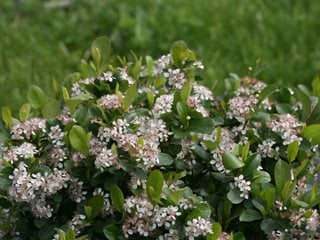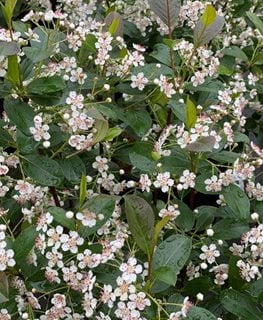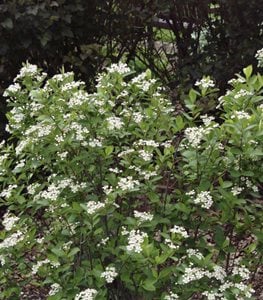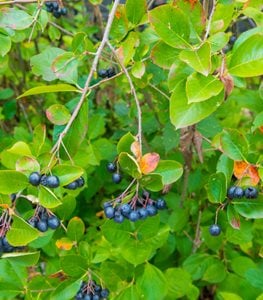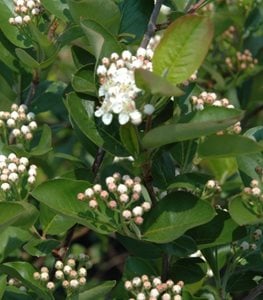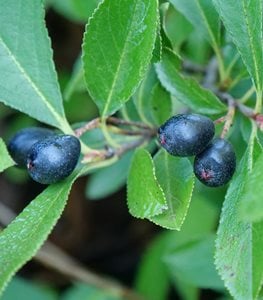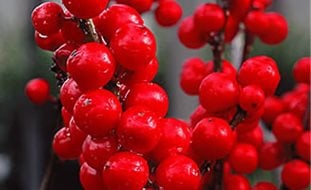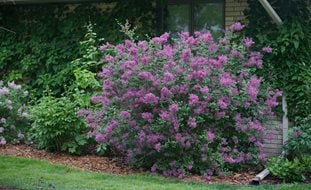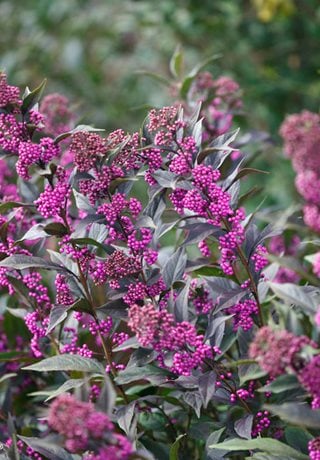A Guide to Growing Chokeberry Shrubs (Aronia)
Add this edible native shrub to your landscapeIn recent years, chokeberry (Aronia) has gained renewed attention for its range of health benefits. Long a staple of Eastern European diets, this superfood has only recently been rediscovered in the United States, even though it’s native to woodlands, swamps, and bogs of eastern North America. Chokeberry is a versatile low-maintenance shrub that can easily be grown in home gardens.
With three-season interest, tolerance of a wide range of growing conditions and nutritious edible fruit, chokeberry makes an invaluable addition to any landscape.
On this page: Basics | Planting | Care and Maintenance | Pictures | Design Ideas
On this page:
CHOKEBERRY BASICS
Botanical name:
Aronia spp.
Common names:
Also known as black chokeberry and red chokeberry; sometimes confused with chokecherry (Prunus virginiana) because of the similar common name.
Zones:
Zones 3-9
Habit:
Bushy habit
Height/Spread:
8 inches to 12 feet tall, 1-1/2 to 10 feet wide
Exposure:
Partial shade to full sun
Bloom time:
Spring
Flowers:
Prolific clusters of scented blooms appear in spring. The five-petaled white or pink-tinged flowers, 1/2 inch across, have distinct dark pink tipped stamens and attract insect pollinators.
Fruit:
From late summer to fall, shiny edible blueberry-like fruits are produced in colors of black, purple, or red. Aronia is self-fertile, but will have bigger fruits and larger harvests when planted near other specimens.
Foliage:
Finely toothed green leaves 1 to 4 inches long are lance or oval-shaped with a glossy sheen. The foliage turns brilliant hues of red, orange or purple in fall.
Types of aronia:
There are two main species, red chokeberry (Aronia arbutifolia) and black chokeberry (A. melanocarpa), as well purple chokeberry (A. prunifolia), which is a natural hybrid of the other two. Most cultivated varieties are black chokeberries.
Toxicity:
Aronia is not considered toxic to pets or children.
Are chokeberries deer resistant?
Younger plants are more susceptible to deer browsing. Protect with fencing or other barrier until well established. Overall resistance depends on the time of year and amount of competition for food. Browsing becomes less of a problem later in the season when other food sources are plentiful.
PLANTING CHOKEBERRY
When to plant:
Aronia can be planted in spring or fall when the weather is moderate.
Where to plant:
Plant in a site that receives full to partial sun. Plants will produce the most flowers and berries when they receive at least 6 hours of full sun per day. Too much shade will result in weak growth and poor production.
How to plant:
Loosen soil in an area that is three times as wide and deep as the container the plant is in. Amend the soil with compost or other organic matter. If plants are pot-bound, gently tease out the roots. Dig a hole the size of the root ball and place the plant in the hole so the top of the root ball is level with the surrounding soil. Fill in the hole with soil, tamp down gently to remove air pockets, and water thoroughly. Water plants regularly until established. Space plants 4 to 6 feet apart. Mulch around plants to control weeds and retain moisture.
CHOKEBERRY CARE & MAINTENANCE
Pruning aronia plants:
Aronia blooms on old wood. Lightly shape plants as needed in late winter or after flowering. Remove dead or diseased branches. Suckers will develop around the base of the plant. Remove these rooting branches as they appear to prevent spreading.
To rejuvenate plants, thin out a third of older stems every few years. Older specimens may benefit from a more severe pruning back to a few feet tall every few years.
Soil:
Does best in moist, well-draining soil that is slightly acidic. Plants are tolerant of alkaline pH, road salt, and a wide range of soils, including sand and clay. Aronia will even grow in wet soils, making it a good choice for boggy areas where little else will grow.
Amendments & fertilizer:
Needs little or no supplemental fertilizer. If desired, apply a balanced slow-release fertilizer in spring and add a thin layer of compost around the base of the plants.
Watering:
Keep soil evenly moist until plants are established. Mature plants do best with moderate water, but are tolerant of drought and excessive moisture. To maximize fruit production, provide regular water and increase irrigation in extreme heat or prolonged dry spells.
Diseases and pests:
Few pest or disease problems. Pests can include aphids, scale, lace bug, fall webworm, or apple maggots. Diseases can include fruit or twig blight, leaf spot, or powdery mildew.
CHOKEBERRY PICTURES
Aronia alternatives: Blueberry bushes produce similar looking edible berries with a sweeter taste, and also develop brilliant fall color. Lower growing huckleberries can be substituted for dwarf varieties of aronia.
LANDSCAPE DESIGN TIPS
With all the variation and seasonal interest that aronias bring to the garden, the uses are nearly endless.
- Include a dwarf form in an edible raised bed kitchen garden.
- Plant a larger variety in a row to screen a property line.
- Place along a stream or other naturally wet area where plants can spread naturally.
- Create an edible garden area along a slope using chokeberry and blueberry shrubs, with groundcover strawberries as an underplanting.
- Use a medium-sized variety as a foundation planting. Combine with other shrubs with multi-seasonal interest for an ongoing color display.
- Use a groundcover variety instead of a grass lawn in a challenging area that gets plenty of sun.
- Plant a hedge of a medium-sized variety to divide garden rooms and keep the hedge sheared for a formal look.
- Use a medium to large variety as a stand-alone focal point in an island bed.
- Plant alongside other native plants to create shelter and food for birds and other wildlife.
ARONIA HEALTH BENEFITS
The common name of chokeberry refers to the tartness of the edible fruits, which have a taste so bitter they can cause a choking sensation when eaten fresh. Considered a superfood, aronia berries are high in vitamin C, antioxidants, and flavonoids.
Possible health benefits include boosting the immune system, reducing cell damage due to cancer, improving liver function, protecting against coronary disease, and reducing inflammation due to diabetes. The bitter taste is tempered by processing the berries into jam, jelly, juice, syrup, and wine. The berries can also be dried or brewed into tea.
